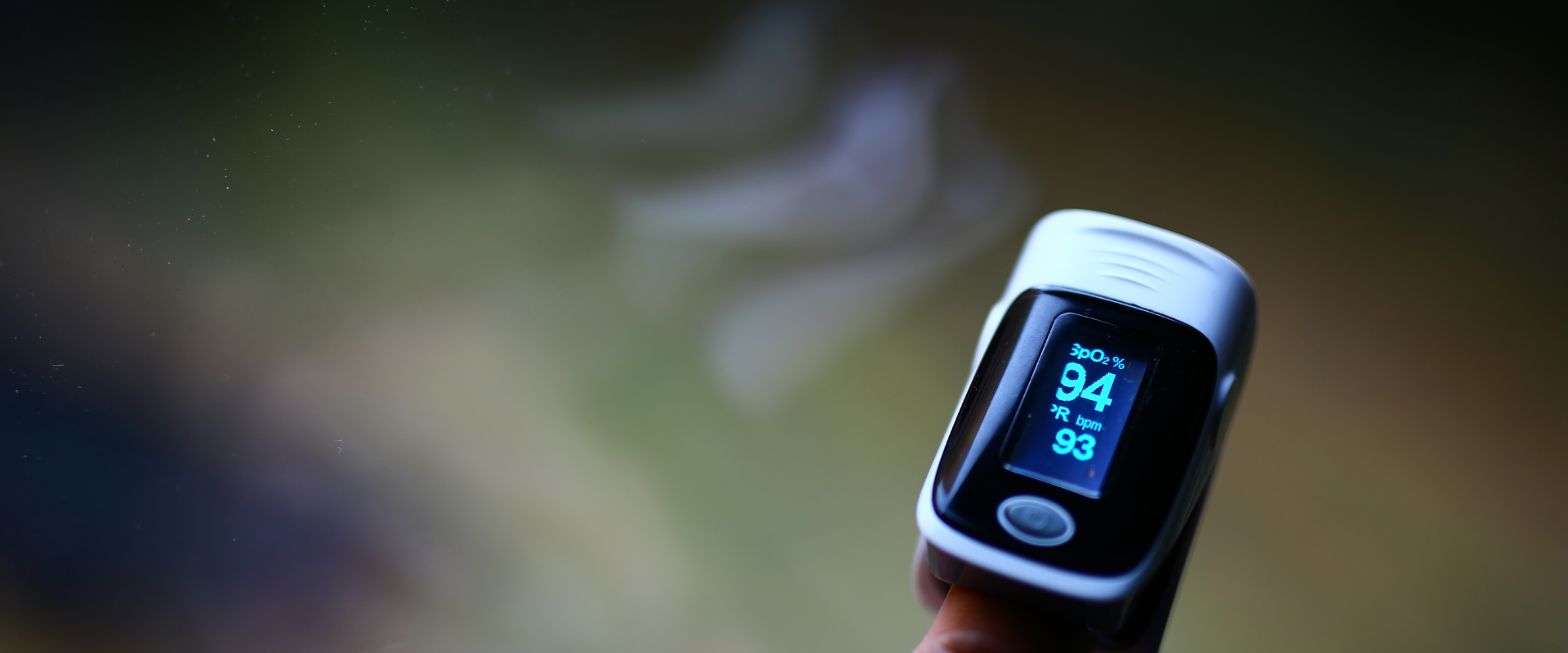Rising Concerns About Pulse Oximeter Accuracy Prompts FDA Evaluation
Rising Concerns About Pulse Oximeter Accuracy Prompts FDA Evaluation
Salt Lake City
November 21, 2022
By Amanda Fuller
On November 1, 2022, the Anesthesiology and Respiratory Therapy Devices Panel of the FDA’s Medical Devices Advisory Committee met virtually to discuss a problem brought to light by the COVID-19 pandemic: pulse oximeters are not as accurate as previously thought, particularly for patients with darker skin.[1]
Pulse oximeters estimate oxygen saturation levels in the blood by sending beams of light through the tip of a patient’s finger.[2] The founding technology for pulse oximeters was first developed and tested in Japan, and the first devices were primarily used in high-altitude environments for fighter pilots, mountaineers, and astronauts (a predominantly white group of individuals when the devices were introduced).[3] By the 1980s, pulse oximeters became widely used in healthcare as a way to assess a patient’s oxygen saturation quickly and painlessly, compared to an arterial blood draw.[4] Despite their ubiquitous use and providers’ reliance on their readings in clinical settings, efforts to improve these devices over time were minimal.
In April 2005, Drs. Philip E. Bickler, John R. Feiner, and John W. Severinghaus published a study that called into question whether pulse oximeters were as accurate on darker-skinned patients as lighter-skinned patients.[5] The study concluded that pulse oximeters tended to overestimate the arterial oxygen saturation during hypoxia for darker-skinned patients.[6] This discrepancy occurs because melanin in the skin absorbs some of the light pulse oximeters use to make a reading. For that reason, patients with higher levels of melanin are more likely to have an inaccurate reading because less light passes through their skin.[7] Although this information was published, it did not reach a wider audience and was not included in medical school curricula.[8] However, the COVID-19 pandemic caused many providers to question their reliance on pulse oximeter readings, bringing this study and other confirmatory studies to the forefront at last.
During the height of the pandemic, healthcare providers started to notice troubling discrepancies between pulse oximeter readings and arterial blood gas readings, particularly in darker-skinned patients.[9] Dr. A. Ian Wong and his colleagues at Duke Health also noticed a troubling tendency in a study they conducted which found that patients with darker skin were 40% to 70% less likely to have their pulse oximeter reading confirmed by an arterial blood gas test, even though they were 38% more likely to be affected by hidden hypoxemia.[10] For this reason, Dr. Wong urges other healthcare providers to order more frequent arterial blood gas tests to confirm that patients remain at safe oxygen levels until pulse oximeter technology is improved.[11]
In light of these rising concerns, the FDA released a safety communication in February 2021 warning both the general population and healthcare providers that several factors may affect the accuracy of a pulse oximeter reading, including “poor circulation, skin pigmentation, skin thickness, skin temperature, current tobacco use, and use of fingernail polish.”[12] However, many in the medical community are concerned that warnings about pulse oximeters are not sufficient to address this issue and called on the FDA to more strictly regulate both over-the-counter and prescription pulse oximeters.
After hearing presentations on pulse oximeter accuracy from clinicians, researchers, professional societies, patients, and the FDA, the Anesthesiology and Respiratory Therapy Devices Panel concluded that pulse oximeter accuracy poses an increased health risk to patients with darker skin. In light of this conclusion, the Panel made several recommendations to the FDA regarding future pulse oximeter testing and distribution. First, the Panel noted a need for additional studies of pulse oximeters that consider skin perfusion, device fit, and sensor location and voiced their support for two FDA-funded studies at the UCSF-Stanford Center for Excellence in Regulatory Science and Innovation (CERSI) which will evaluate pulse oximeter accuracy in both adult and pediatric populations.[13] Second, the Panel recommended that future pulse oximeter studies should include detailed information about participants’ skin pigmentation using a combination of subjective assessments like the Fitzpatrick or von Luschan color scales, objective assessments like melanometer measurements, and the participants’ self-reported race/ethnicity.[14] The Panel also recommended that the FDA use additional metrics to test devices’ performance instead of relying only on Arms (the root mean square of pooled data pairs) as they do currently. Finally, the Panel recommended that labeling of the devices should include a statement about the accuracy of the device for various skin pigmentation levels and that packaging for over-the-counter devices should clearly state that they are not intended for medical use or clinical decision making. The Panel also recommended education efforts directed at healthcare providers and patients regarding the intended uses and limitations of over-the-counter pulse oximeters.[15]
[1] The recording of the meeting is available on YouTube: https://www.youtube.com/watch?v=oQoF0XS9QNc.
[2] Pulse Oximeter Accuracy and Limitations: FDA Safety Communication, FDA (Feb. 19, 2021), https://www.fda.gov/medical-devices/safety-communications/pulse-oximeter-accuracy-and-limitations-fda-safety-communication.
[3] Usha Lee McFarling, Pulse Oximeters and Their Inaccuracies Will Get FDA Scrutiny. What Took So Long?, STAT (Nov. 1, 2022), https://www.statnews.com/2022/11/01/pulse-oximeters-inaccuracies-fda-scrutiny/.
[4] Id.
[5] Philip E. Bickler, M.D., Ph.D, John R. Feiner, MD, & John W. Severinghaus, MD, Effects of Skin Pigmentation on Pulse Oximeter Accuracy at Low Saturation, 102 Anesthesiology 715-719 (April 2005), https://pubs.asahq.org/anesthesiology/article/102/4/715/7364/Effects-of-Skin-Pigmentation-on-Pulse-Oximeter.
[6] Id.
[7] McFarling, supra note 3.
[8] Id.
[9] A. Ian Wong, The Accuracy of Pulse Oximeters Shouldn’t Depend on a Person’s Skin Color, STAT (July 5, 2022), https://www.statnews.com/2022/07/05/pulse-oximeters-accuracy-skin-color/.
[10] Id.
[11] Id.
[12] Pulse Oximeter Accuracy and Limitations: FDA Safety Communication, supra note 2.
[13] 24 Hour Summary of Anesthesiology and Respiratory Therapy Devices Panel Meeting, FDA (Nov. 1, 2022), https://www.fda.gov/media/162984/download.
[14] Id.
[15] Id.
Disclaimer: This publication is not intended to provide legal advice but to provide general information on legal matters. Transmission is not intended to create and receipt does not establish an attorney-client relationship. Readers should seek specific legal and/or medical advice before taking any action with respect to matters mentioned in this publication. The attorney responsible for this publication is Amanda Fuller. This post constitutes a form of attorney advertising as defined by some state bar associations.


